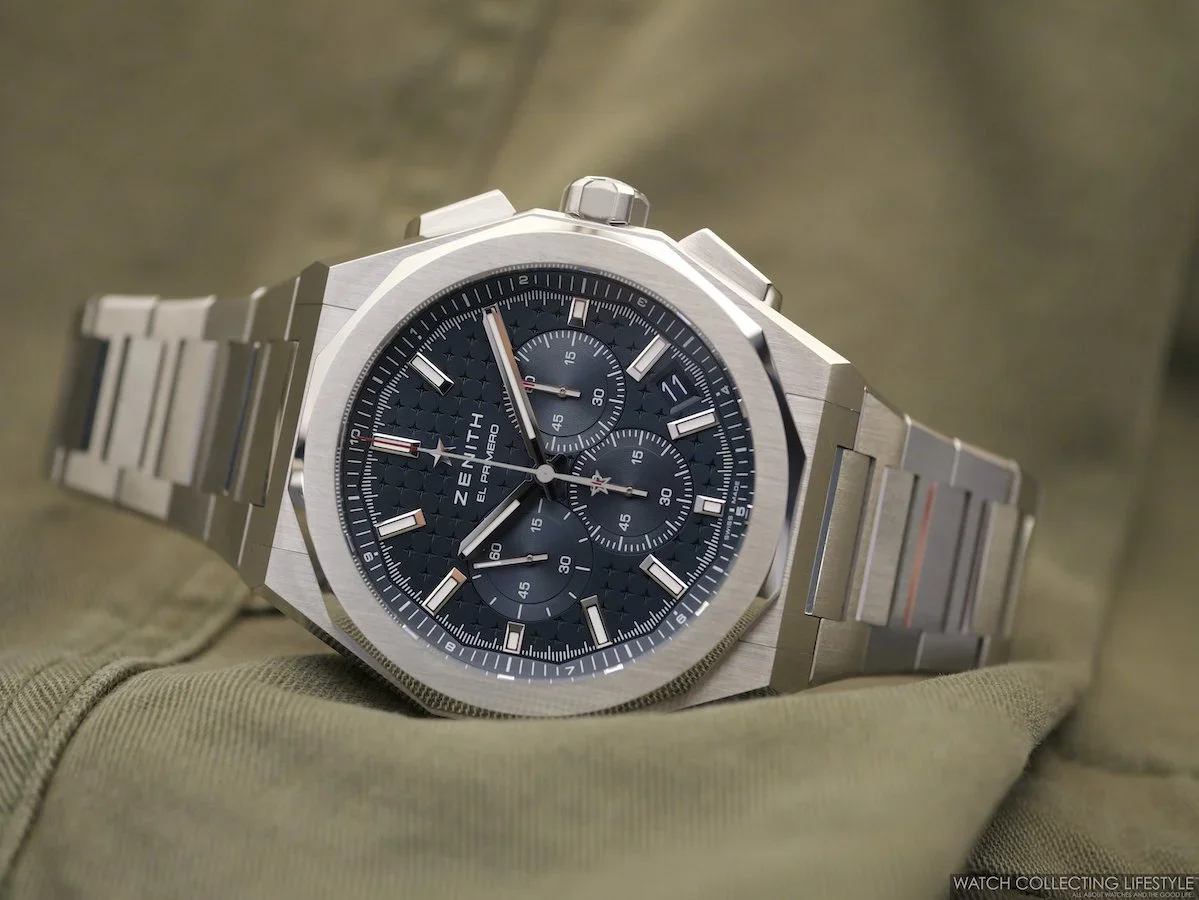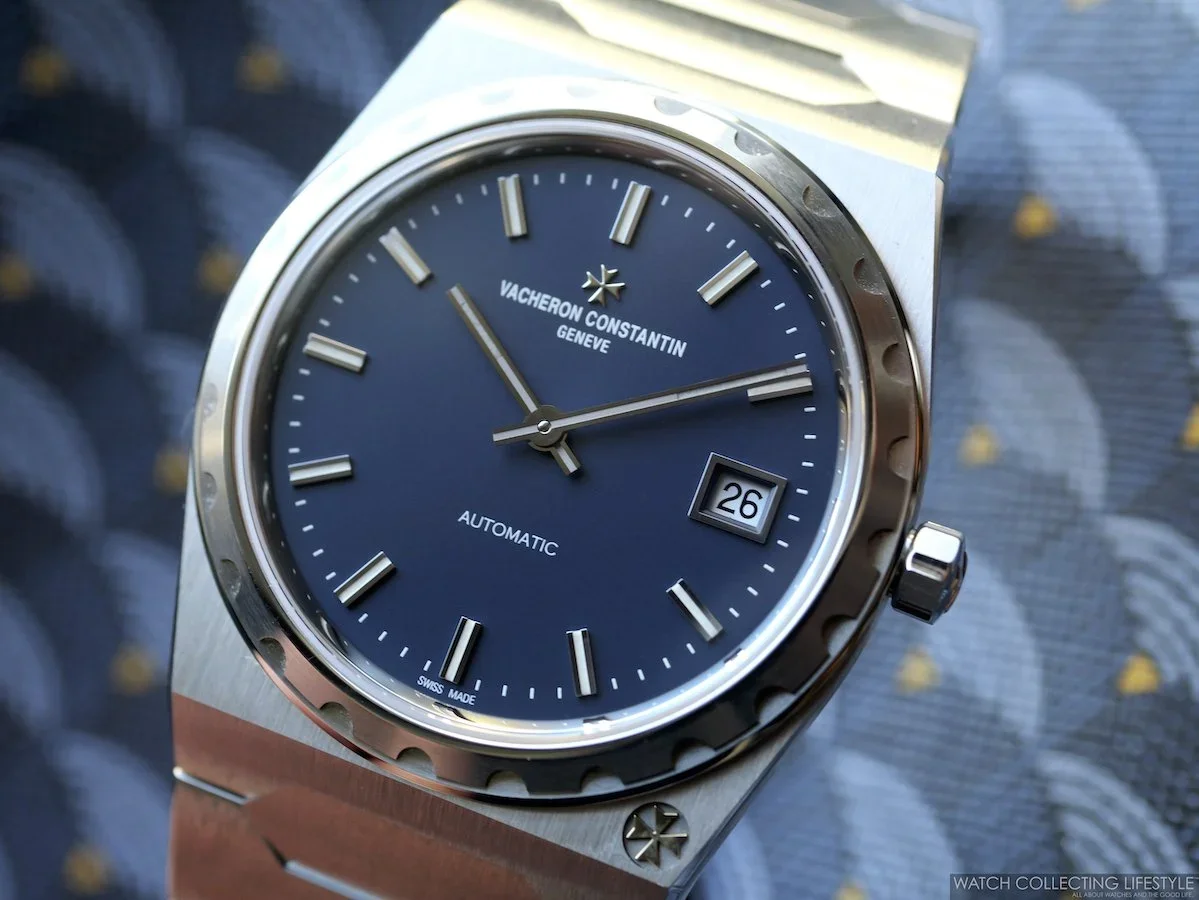After inventing a new way of telling time, without dials or hands, Genus introduces a timepiece in Damascene Titanium. It is a rare material in Haute Horlogerie. An ancient technique that involves a savoir-faire as challenging as it is subtle. It is called Mokume-gane in Japan, where the method has been used for making katana sword blades since the 17th century. In the heart of the forge, the hammering and folding of layer upon layer of titanium is a craft reserved for the best. Three times as hard as steel, titanium is also wrought at much higher temperatures, between 1200 and 1400 degrees Celsius. The hues obtained through blueing-by-hand over an open flame are unique to each watch. The buyer is welcome to attend this finishing stage and choose the intensity of the color effects.
In 2019, Genus opened the first chapter of its story with two remarkable timepieces, the GNS1.2 WG and the GNS1.2 RG. Ten years of research, two inventions, and three years of development went into this watch. Two patents lay down the basic principles of the two innovative mechanisms that underpin this free-flowing time display. The GNS1.2 RG in rose gold, the GNS1.2 WG in white gold, both measuring 43 mm in diameter and 13.1 mm thick, featuring the calibre 160W-1.2 or 160R-1.2, a new movement consisting of 418 components, entirely created and manufactured by Genus in their Geneva workshop. It is a movement characterized first and foremost by its novel complication for indicating time. No dial, no hands. GENUS quite simply invented an unprecedented way of telling time —the mechanism as a dramatic performance.
In 2020, Genus re-imagines the GNS by incorporating it into a new metal case. After white gold and rose gold, Genus ventures into new territory for watchmaking with a damascened titanium case, hence the name GNS1.2 TD Titane Damassé —Damascene Titanium. Applying the Damascus smithing technique to titanium requires a rare savoir-faire. In fact, the skill is listed in the Inventory of Intangible Cultural Heritage in France.
The art of damascening consists of forging sheets of the metal layer by layer. After having been hammered, each sheet is folded back upon itself, and the operation is repeated as many times as necessary – one might say like preparing the laminated dough used for puff pastry. This homogeneous ‘stacking’ of homogeneous layers, each one annealed between each fold, gives the material an entirely new, very particular aspect. Each incision, each bevel into the edge of the damascened metal reveals the strata, the shapes, the undulations, the unique character of each layer.
The Genus GNS1.2 TD Damascene Titanium is carved from a block of Damascene Titanium. Thus, the complex representation of time in flux belonging to Genus finds itself echoed by the moiré, undulating, changing appearance where color nuances make each piece unique by the very nature of this craft.
The difficult work, at the heart of the forge’s embers, of folding and layering, is usually done with iron or steel for katana blades. Although 40% lighter, titanium is three times harder and can be forged at temperatures 300 degrees higher than for conventional watchmaking steel. This makes the method, which remains largely manual, quite laborious, and complex. In addition, to further enrich the appearance of this basic material, Genus works with layers of various titanium alloys, each of which exhibits a different tint and reaction to heat. The colorful effect is rendered even more visually arresting by the final heat treatment that determines the general tone of the metal block, along with its subtle differences in tints and hues. Genus works with layers of different titanium alloys, each of which exhibits a different tint and reaction to heat. The final blueing stage takes place at the Genus workshop in Geneva. The future owner may, if he wishes, attend, and choose the intensity of the blue tones.
After introducing a new way of looking at and telling time with orbital hours and minutes, which garnered the Mechanical Exception Prize at the most recent Grand Prix d’Horlogerie de Genève —GPHG. The innovation behind this display complication and its underlying mechanism was imagined, technically, in a completely new and daring way. A new stone humbly brought to the edifice of Swiss horological heritage by the man who invented it, the Master watchmaker Sébastien Billières. An approach first rewarded by the recognition of his peers by the attribution of the prestigious and coveted Mechanical Exception Prize at the Grand Prix d’Horlogerie de Genève —GPHG— in 2019.
Master Watchmaker Sebastien Billieres
Twelve satellites, one for each hour. They make a complete revolution along the periphery of the movement, at the crystal’s edge, once every twelve hours. The fixed white arrow on the left, in front of which the satellites scroll, points to the current hour. To remain in the reading direction, the satellites re-orient themselves and pivot 90 degrees every 3 hours, i.e. four times. The hour numbers – molded in superluminova and affixed to the revolving time-indicating satellites are the result of meticulous development and design.
The presentation of the new watch is also the occasion for announcing the digital certification of all its timepieces, an effective and modern means of combating counterfeiting, and guaranteeing authenticity for the owner of the timepiece throughout its lifetime.
Additionally, Genus offers customization of the orientation of the ‘genera’ —the hallmark free-moving elements that flow in a pattern to indicate the tens-of-minutes. They can be set straight or inclined, depending on the wearer’s aesthetic preference for the watch. This option can provide more comfortable legibility for some owners. Also, Genus adjusted the curvature of the sapphire crystal which eliminated the perceived ridges on the upper perimeter. This mitigates any visual distortion of the hour indices, thereby improving the clarity of the timekeeping mechanism. The watch is water-resistant to 30 meters.
The architecture of the movement is indicative of the genetics of the Genus project. The intrinsic principles of freedom, flexibility and future evolution are based on its separation in two parts. The base, which can be described as the foundation of the movement, groups the essential functions, including a single barrel. It ensures a 50-hour power reserve, which is considerable in view of the complexity of the calibre and the moving elements. On top of this are built the individual complication modules for managing the display of hours, and tens, and units of minutes.
All the components of the calibres 160W-1.2 have been designed and hand-worked by the watchmaker in accordance with the requirements and tenants of Haute Horlogerie. The main plate and bridges are made of 18K gold obtained through an ecologically and socially responsible supply chain, certified by the RJC —Responsible Jewellery Council. Another advantage is that gold has an anti-magnetic property and is therefore largely protected from the harmful influence of magnetic fields. Finally, gold lends itself extremely well to the finest finishing techniques.
Genus was invited to participate in the launch of the Bucherer Gallery in Geneva, a haven of conviviality and hospitality established by this major watch retailer. Genus then accepted the invitation to participate in Dubai Watch Week, where the brand was asked to develop and hold daily Master Classes. A few months later, the brand made its debut at the flagship boutique of Ahmed Seddiqi & Sons in the Dubai Mall, cementing the confidence of the leader in watch distribution in the Middle East. Recently, in Switzerland, the brand joined the highly sophisticated watchmaking selection showcased by famed retailer Les Ambassadeurs in their boutique on the exclusive Rue du Rhône in Geneva, the city where the story of Genus began.
The Genus GNS1.2 TD Damascene Titanium is delivered on a calf leather, folded edge, and hand-stitched, navy blue strap but an alligator strap is also available upon request. The strap is secured by a pin buckle in damascene titanium with the Genus logo. A fold-over clasp is also available upon request
Sticker Price CHF 145,000 Swiss Francs —approximately $152,000 USD. For more info on Genus click here.






























